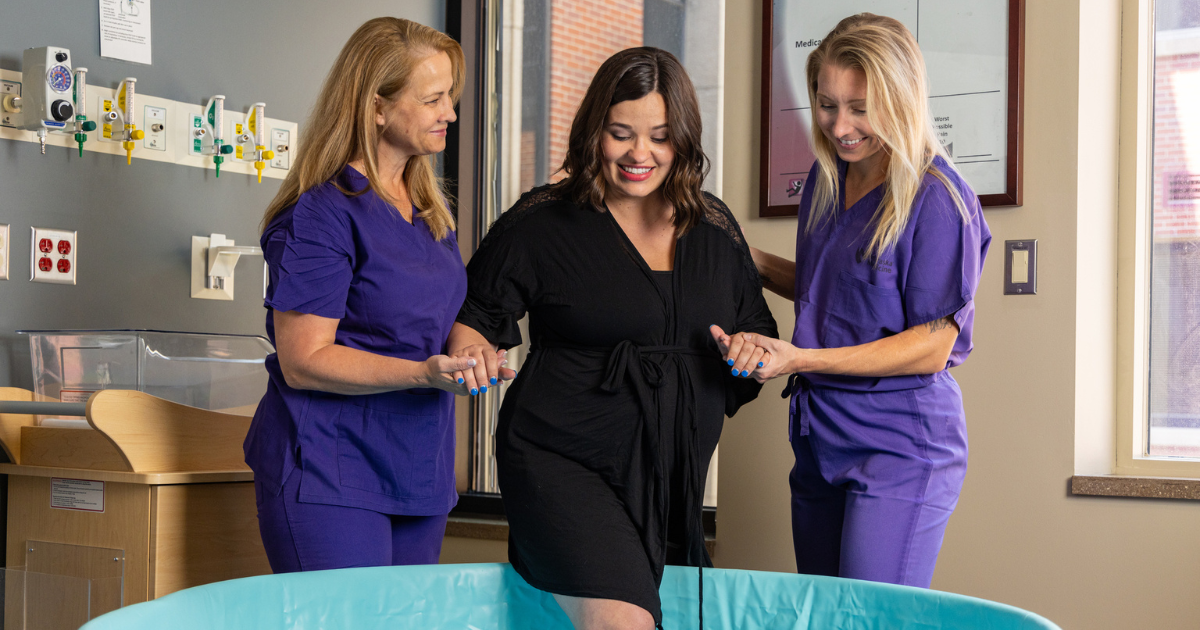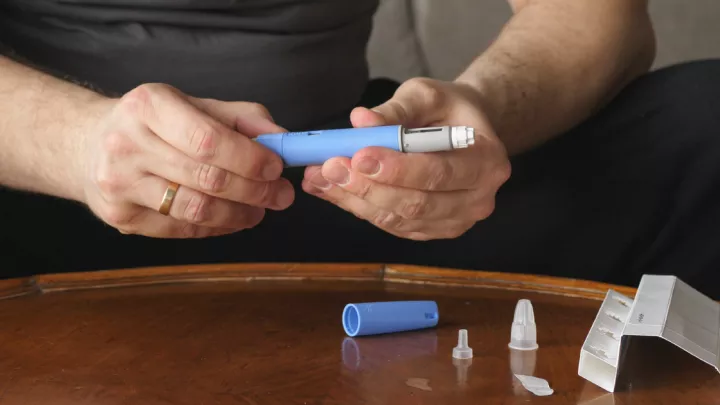Can I have a water birth in the hospital?

More hospitals are offering mothers the option of water births. But is water birth right for you and your baby?
What is a water birth?
Water birth is the process of giving birth in a tub or pool of warm water. It is believed to provide a gentle birth experience and assist in a natural, or medication-free, birth for mothers.
Certified Nurse Midwife Kathleen Scott, DNP, APRN-CNM, explains that babies do not breathe until their faces are exposed to air. During a water birth, babies are carefully lifted from the water and placed on their mother’s chest. Babies continue to receive oxygen from the umbilical cord, just like during pregnancy.
“It’s a very gentle transition from life inside mom’s body to life outside mom’s body,” Scott says. “Babies born in water tend to be very calm, pink up beautifully and are very curious. They’re looking around, going, ‘Oh, hey! Are you my mom? Nice to meet you.’”
What are the pros and cons of water birth?
The benefits of water birth may include:
- Decreased pain and need for anesthesia
- Shortened labor time
- Less perineal tearing
- Higher patient satisfaction
“It helps release endorphins, which are our happy hormones and natural painkillers,” Scott explains. “The warm water is incredibly soothing and helps muscles relax. Relaxed muscles work more efficiently, and with the relaxation of the muscles, blood flow increases. That helps the body utilize its naturally occurring oxytocin, which is the hormone that makes the uterus contract. So your body is using all its resources very efficiently and effectively.”
The risks of water birth are rare but may include:
- Premature separation of the umbilical cord, or cord avulsion
- Slips or falls due to the water
- Baby’s body temperature affected by water that is too hot or cold
- Baby breathing in water
If you are considering water birth, it is important to find a medical facility with highly trained providers who take precautions such as carefully regulating the water temperature and using a sterilized tub or pool.
Who can have a water birth?
If you have high-risk conditions, such as high blood pressure, diabetes or seizure disorders, water birth is not a safe option. However, you may opt for water birth if you:
- Have a low-risk pregnancy
- Are at least 37 weeks gestation with a single baby who is in a head-down position
- Do not wish to have regional or neuraxial analgesia, such as an epidural
Some women who do not meet the criteria for water birth may still use hydrotherapy, which is spending the earlier part of your labor in a warm bath, then transitioning to “land” for the delivery. Hydrotherapy offers pain management and relaxation to patients who have not yet received IV medication or an epidural.
How can I plan for a water birth?
If you want to include water birth in your birth plan, it is important to discuss it with your provider, Scott says.
“You should be having a conversation, asking, ‘Am I a good candidate? What does it look like for me? What are my options’” she says. “We want to make sure you understand about informed consent.”
With years of hydrotherapy experience and evidence-based information about the benefits and risks of water birth, Nebraska Medicine nurse midwives can help you decide if it is right for you. If so, they can support you in incorporating that into your birth plan.
What can I expect for my water birth at Nebraska Medical Center?
If you and your provider agree that water birth is a good option, you can plan to be in a labor suite that contains a whirlpool tub or you may deliver your baby in a 5-foot-diameter, portable birthing pool.
Some women wonder what to wear during labor, and Scott says it is entirely up to them.
“Some wear a sports bra or a bikini top, and once baby is out, we help her take it off because it’s wet, and she will cool down and get chilled very quickly,” Scott says.
Women may also remove their clothes completely, which Scott says happens in unmedicated patients as their labor is progressing. “We’ll know she’s getting close because all the clothes start coming off. Some people don’t like that extra stimulation because there is a lot happening internally.”
Additional guests are not allowed in the tub or pool, but its soft sides will enable them to remain close.
“For safety reasons, no one else can get in,” Scott says. “But the person supporting that woman, whether it’s the patient’s partner, doula, parent or whomever, still has access to her. This is one of the people who love her best in the world and who can provide the best support.”
Call 800.922.0000 to schedule an appointment with one of our midwives or learn more about our midwife program at NebraskaMed.com/Pregnancy-childbirth/Midwives.







